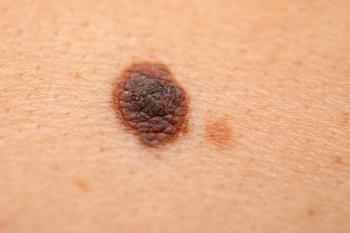
Biosimilars and interchangeable biologics: News to watch
Biosimilars in the United States are slowly gaining traction, but widespread confusion and legal barriers remain.
Biosimilars in the United States are slowly gaining traction, but widespread confusion and legal barriers remain
During the session, “Interchangeable Biologics and Biosimilars: The Federal and State Perspective” at the Academy of Managed Care Pharmacy (AMCP) Nexus on October 5, presenters shed some light on these issues.
Biosimilar, not a bioequivalent
Kevin M. Nelson, JD, partner at Duane Morris LLP, in Chicago, who copresented with Sean Karbowicz, PharmD, RPh, founder and lead pharmacist at MedSavvy, in Portland, Oregon, stressed that a biosimilar is not a bioequivalent. It must be “highly similar” to the reference product, notwithstanding minor differences in clinically inactive components, he said.
So what does “highly similar” mean? According to the statute, it means there are no clinically meaningful differences in terms of safety, purity, and potency between the biosimilar and reference product, said Nelson.
The FDA requires that a biosimilar must have the same mechanism of action, routes of administration (ROA), conditions of use, dosage form, and strength as the referenced product, he said.
Nelson cited the FDA’s 2012 draft guidance that provides three ways a biosimilar can be different from the reference product (provided it shows biosimilarity):
· Different formulation;
· Can seek approval for less than all ROA; and
· Can seek approval for less than all indications.
Where we are now
While Europe has had a biosimilar pathway since 2006, biosimilars didn’t get into the books in the U.S. until 2012, and we didn’t really get moving on biosimilars until 2015, said Nelson.
Currently, four biosimilars are approved in the U.S. (with two approvals occurring in the last 2.5 months), he said. “The U.S. is lagging far behind, Europe has a proven track record now of getting biosimilars safely on the market and paid for.”
Nelson said the slow progress is due to scientific, regulatory, payment, naming, coding, and litigation barriers (such as patent disputes). Of litigation, he said, “This is really what’s right now stopping some of our biosimilar products from getting on the market.”
The first approved biosimilar was Sandoz’s Zarxio (filgrastim-sndz), approved in March 2015 and launched in September 2015. This noninterchangeable biosimilar to Amgen’s Neupogen (filgrastim), initially sold at a 15% discount off the wholesale price.
“While it was the first biosimilar on the market, it provided us an example for getting a biosimilar approved, but not necessarily the example for getting a biosimilar approved,” said Nelson.
Other biosimilars approved, but not yet sold are:
· Inflectra (infliximab-dyyb)
· Sandoz’s Erelzi (etanercept-szzs)
· Amgen’s Amjevita (adalimumab-atto)
Interchangeable biologics
Currently, no interchangeable biologics do not exist-and probably won’t exist for a while-but when they do arrive, they will change the game completely, said Nelson.
While biosimilars must demonstrate that they are “highly similar” to the reference products, interchangeable biologics get “even closer to the bullseye,” said Nelson.
For a product to meet the legal standard for interchangeable biologic, Nelson said it must show biosimilarity and provide the same clinical result in any given patient.
So how do you show interchangeability? The FDA has not yet put standards in place, said Nelson. “We don’t know yet, but it’s something that’s on the minds not only of manufactures but Congress as well,” he said.
What to watch for
One thing to watch and wait for is some additional guidance from the FDA on interchangeable biologics, said Nelson.
He also said that, in the future, there will be some technology innovations related to how these products are made, tested, prescribed, tracked, and paid for “We’re seeing some of those happening now,” he said.
Also coming soon will be legal and regulatory changes related to these products, and more licensing and settlement agreements, said Nelson.
In addition, he said, the hope is that there will be more national harmonization (and perhaps international harmonization) regarding regulations and legal rules, increased uptake, and payment standards.
Newsletter
Get the latest industry news, event updates, and more from Managed healthcare Executive.




















































